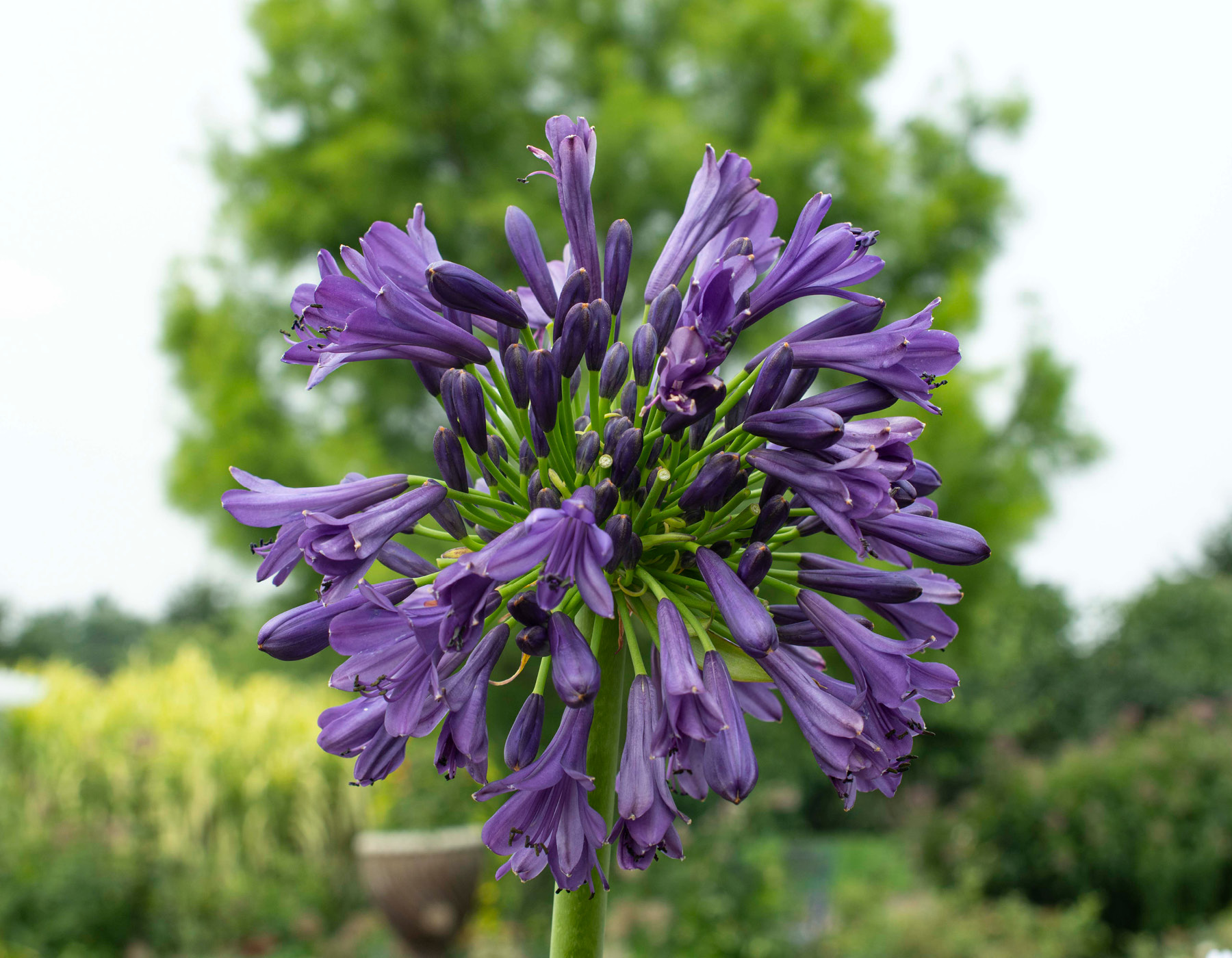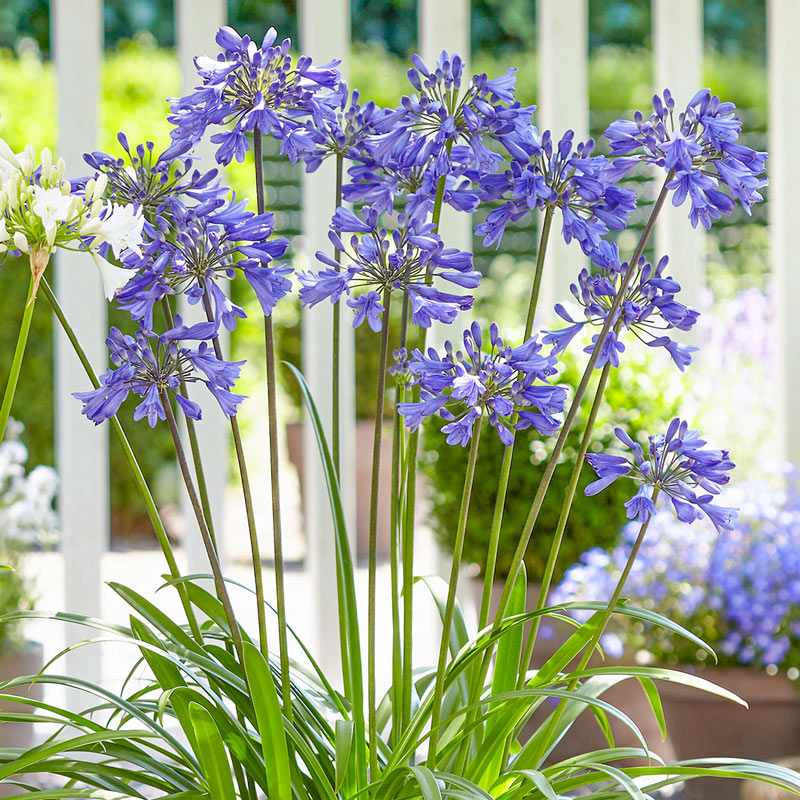Mastering the Art of Agapanthus Treatment: Necessary Actions for Healthy Development and Vibrant Blooms
In the realm of gardening, the growing of agapanthus stands as a gratifying endeavor for those that seek to support these elegant blooming plants. From choosing the best variety to grasping pruning methods, the trip in the direction of growing growing agapanthus plants is diverse and holds the key to opening the complete capacity of these agricultural gems.

Choosing the Right Agapanthus Selection

When choosing the best Agapanthus selection for your yard, think about variables such as climate viability, bloom shade, and growth habit. Agapanthus, frequently recognized as Lily of the Nile or African lily, can be found in a selection of shades varying from tones of blue and purple to white. Select a flower shade that complements your existing yard scheme to create an unified landscape. Additionally, think about the climate in your area to make sure the Agapanthus variety you pick can thrive in your certain conditions. Some ranges are extra tolerant of cold temperatures, while others like warmer climates. Understanding the development routine of various Agapanthus selections is vital for appropriate positioning within your yard. Some varieties have a clumping growth practice, perfect for containers or boundaries, while others have a more spreading nature, suitable for ground cover or mass growings. By meticulously examining these elements, you can choose the excellent Agapanthus selection to enhance the beauty of your garden.
Ideal Planting Problems
Thinking about the optimal environmental requirements is crucial for effective Agapanthus cultivation. Agapanthus flourishes in well-draining soil with a somewhat acidic to neutral pH degree. When growing, pick an area that receives complete sunlight to partial shade. In hotter environments, supplying some afternoon color can protect against scorching of the leaves. Agapanthus plants are delicate to cool temperature levels and ought to be secured from frost throughout winter months.
To make sure healthy and balanced growth and vibrant blooms, plant Agapanthus light bulbs at a depth of regarding 2-4 inches and space them 8-12 inches apart. Mulching around the base of the plants helps preserve dampness and subdues weed growth.
Watering and Fertilizing Tips
Maintaining correct wetness degrees and giving necessary nutrients are crucial elements in the treatment routine for Agapanthus plants. It is vital to strike an equilibrium when it comes to watering Agapanthus. If overwatered, these plants choose consistently wet soil but are prone to root rot. During over at this website the growing season, water deeply once a week, making certain the soil is well-draining to stop waterlogging. In hotter environments or throughout durations of dry spell, even more regular watering may be needed to keep the soil equally wet. However, minimize watering in the winter to protect against water logged conditions.
Feeding Agapanthus is crucial for advertising healthy and balanced development and prolific blossoms. Apply a balanced fertilizer, such as a 10-10-10 formula, in the very early springtime as brand-new development arises. By adhering to these watering and feeding suggestions, you can ensure your Agapanthus plants prosper and generate vivid, resilient flowers.
Pruning Techniques for Agapanthus
Pruning Agapanthus plants at the proper times and with correct methods is vital for maintaining their health and wellness and advertising Get More Information optimum development and blooming. The suitable time to prune Agapanthus is in late wintertime or very early spring before new growth arises.
For flowered stems, wait up until the blooms have actually withered and afterwards cut them back to the base. This not just cleans the plant's look but additionally encourages the development of new flower buds. Deadheading spent blossoms can additionally reroute the plant's energy into producing even more flowers instead of setting seeds. Nevertheless, if you intend to accumulate seeds for breeding, leave some blossoms to dry and fully grown on the plant.
Bear in mind to utilize clean, sharp tools to make specific cuts and decrease the risk of introducing illness. Agapanthus. Routine trimming will assist maintain your Agapanthus looking healthy and balanced and neat while making sure an abundant screen of lovely flowers
Managing Common Insects and Diseases
After guaranteeing appropriate pruning methods for Agapanthus, it is essential to address usual parasites and conditions that can influence the wellness and vigor of these plants. One typical insect that affects Agapanthus is the Agapanthus gall midge.
An additional common issue is fungal leaf place, which offers as dark sores on the leaves. To stop fungal diseases, ensure excellent air flow around the plants, avoid overhead watering, and eliminate any infected leaves promptly. In addition, Agapanthus plants can struggle with origin rot if they are grown in badly draining soil. To avoid this, plant Agapanthus in well-draining dirt and prevent overwatering. By being cautious and taking timely action against diseases and pests, you can assist your Agapanthus plants prosper and produce vibrant flowers.

Final Thought
In final thought, grasping the art of agapanthus treatment entails choosing the ideal range, giving perfect planting problems, appropriate watering and feeding, suitable trimming strategies, and resolving usual insects and diseases. By following these essential actions, you can make sure healthy and balanced development and vivid blooms for your agapanthus plants. Bear in mind to routinely keep track of and maintain your plants to advertise their overall wellness and durability.
To make certain healthy development and vibrant blooms, plant Agapanthus bulbs at a deepness of concerning 2-4 inches and space them 8-12 inches apart. By adhering to these watering and feeding pointers, you click for info can guarantee your Agapanthus plants grow and generate vivid, lasting blossoms.
One common bug that affects Agapanthus is the Agapanthus gall midget. Furthermore, Agapanthus plants can suffer from root rot if they are grown in improperly draining soil. By adhering to these necessary actions, you can make certain healthy and balanced development and lively flowers for your agapanthus plants.